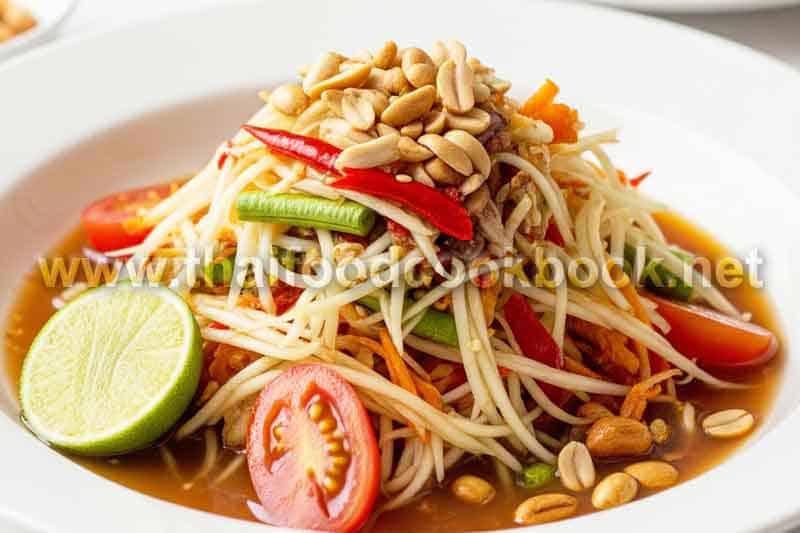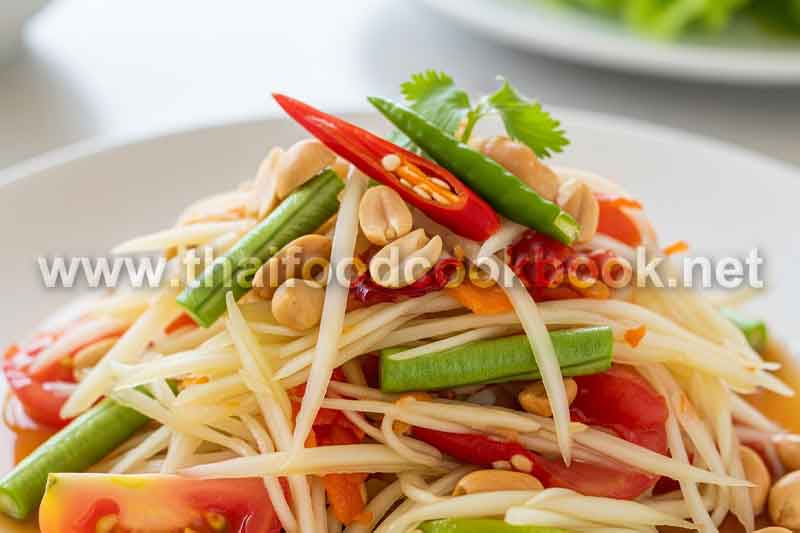Ultimate Guide to Thai Street Food in Bangkok
Travelers who arrive in Bangkok often search endlessly for the most authentic Thai street food, but end up overwhelmed by choices, unsure which vendors are trustworthy, where to find hygienic yet traditional stalls, or how to navigate the maze of local markets without getting trapped in overpriced tourist zones. This guide solves those concerns by laying out real, local-proven solutions that help food lovers access the best dishes Bangkok has to offer while gaining confidence in how to order, what to try, and where to go for both comfort and culinary excitement. Instead of wandering randomly or relying on social media trends with inconsistent credibility, this professional guide breaks down how to explore the city like a local, where to locate signature dishes, and how to safely enjoy night-time dining culture without confusion. The true magic of Bangkok’s culinary identity lies not only in the flavors but in the stories behind every cart, every wok, and every flame dancing behind sidewalks—each one representing a generational craft embedded in Thai heritage. By curating this local knowledge from a street-wise perspective, we help visitors experience authentic cuisine without discomfort, overspending, or language-barrier issues. With Bangkok’s dynamic energy, rich seasoning styles, and open-air culinary theater, diners no longer need to second-guess which neighborhoods deliver the truest taste. When approaching street food culture strategically—with awareness of time, stall rotation, vendor lineage, and dish specialization—you gain access to the city’s edible treasures with ease. This is exactly why a guided breakdown like this becomes invaluable for those who want a meaningful food journey rather than a random snack hunt. Through expertise and on-the-ground familiarity, we assist travelers by offering curated route advice, market classification, common safety cues, and dish recommendations based on authentic Thai living patterns, all tailored to enrich every bite and deepen confidence when exploring Bangkok’s culinary landscape.
Where to Find Authentic Vendors and Famous Local Markets
Bangkok’s culinary map revolves around neighborhoods, each specializing in distinct flavor profiles based on cultural migration, old-trade roots, or temple-linked cooking traditions. For beginners seeking top-tier authenticity, the most consistent areas include Yaowarat (Bangkok Chinatown), Ratchawat Market, Wang Lang Market, Talad Phlu, and Bang Rak—each offering menus shaped by heritage rather than trend-driven gimmicks. Chinatown is a late-night paradise filled with wok-fired aroma trails where stir-fried noodles, char-grilled seafood, and handmade dumplings are crafted continuously until midnight. Meanwhile, Wang Lang Market near the Chao Phraya ferry pier is a lunchtime haven for locals who seek roast pork rice, deep-fried snacks, and warm herbal soups. Talad Phlu, favored by old Bangkok families, remains one of the best places to taste charcoal-grilled pork skewers and traditional sweets passed through generations of family recipes. In the Bang Rak district—commonly called the “Village of Love” because of its cultural fusion—Muslim, Chinese, and Thai vendors mix traditions into legendary curries and street-side braised beef bowls. Travelers should also understand the timing structure: morning markets offer rice porridge and soy-milk pairings, while night markets provide seafood-heavy menus with smoky, aromatic street-theatre cooking. For those concerned about hygiene, the trick is not avoiding street stalls but choosing ones with high turnover, hot serve temperatures, fresh chopping practices, and a visible cooking station. High-buying-intent visitors typically return to vendors displaying consistency, queue lines of locals, and long-standing recipes known within the neighborhood. The experience is not merely about eating random dishes—it’s about knowing how to identify the best stalls through observable cues that acknowledge Bangkok’s unwritten culinary etiquette.
Must-Try Street Dishes and How to Order Them with Confidence
Bangkok offers hundreds of street-side specialties, but several stand as timeless staples of Thai culinary identity. Among the most iconic are pad thai cooked over charcoal, grilled pork skewers (moo ping), boat noodles served in concentrated broth, green papaya salad prepared to custom spice levels, and jasmine rice dishes paired with aromatic curries. Seafood lovers should not miss grilled river prawns or stir-fried shellfish seasoned with garlic and chili, often sold by vendors famous within their districts for consistency rather than signage. Dessert culture is just as impressive—channel coconut desserts, sticky rice variations, and shaved-ice bowls infused with tropical fruits provide balance for spicy mains. To help travelers order confidently, consider this practical checklist:
- Watch how quickly ingredients move—fresh rotation signals quality.
- Look for vendors preparing food upon order rather than reheating.
- If unsure how to pronounce a dish, point at the displayed tray or picture menu—vendors welcome gestures.
- Ask for spice level adjustment using simple Thai words like “mai phet” (not spicy) or “phet nit noi” (a little spicy).
- Choose seats near the cooking station for both ventilation and fresher plates.
Equally important is understanding portion style: most Bangkok street dishes are served in tasting size so diners can try multiple items within a single meal. This system encourages culinary touring rather than heavy main courses, making it ideal for travelers who want variety. Some dishes appear similar to restaurant-style Thai menus abroad, but the flavor intensity here is far deeper due to wok-heat infusion, charcoal grilling, and rustic seasoning layers perfected across generations. Many returning travelers intentionally seek out particular vendors they visited earlier because Bangkok street food culture creates memorable relationships between visitor and cook—like revisiting a favorite storyteller through flavors. With guidance from local familiarity, ordering becomes less intimidating and more celebratory as you confidently navigate the menu like a Bangkok regular.
How to Safely Enjoy Night Markets and Navigate Local Food Culture Like a Pro
Exploring Bangkok night markets can be thrilling, but to dine like a seasoned traveler, it helps to understand cultural rhythm and safety habits specific to Thai food streets. Crowded districts such as Sathorn, Victory Monument, and Pratunam all shift in character depending on time of day: early evening is perfect for skewers and porridge stalls, while after 9 PM grilled seafood and noodle carts dominate the scene. Instead of avoiding crowds, choose stalls attracting locals—slow traffic but trusted quality. Hygiene is typically best where food heats visibly and ingredients are handled openly, not hidden behind enclosures. Travelers sometimes fear tap water or ice, yet most street vendors use filtered ice delivered daily; the greater concern lies with lukewarm dishes rather than cold drinks. For safe navigation, keep these tips in mind:
- Stick to vendors specializing in one or two dishes—they tend to preserve quality and recipe consistency.
- Look for metal tongs or gloves used for handling ingredients.
- Prefer fresh wok-to-plate cooking over pre-cooked trays.
- Avoid seafood left unrefrigerated in hot sun, but charcoal-grilled same-hour seafood is safe.
- Choose carts stationed for years in the same spot—community longevity signals reliability.
Cultural etiquette is also essential: Thai people rarely rush their street-side meals, even in chaotic spaces. Paying after eating is common, tables are shared socially, and sitting alongside strangers is considered normal—hospitality is communal. While Bangkok is internationally famous for gourmet fusion venues, street food remains the city’s true culinary classroom where traditions are preserved in everyday transactions. When travelers approach the experience like insiders—rather than outsiders chasing novelty—they gain the confidence needed to appreciate the cultural logic behind which flavors appear at which hour, on which street, and in which season. This is how experiential dining becomes more than sampling—it transforms into understanding.
Summary
Bangkok’s street food scene functions as a living cultural archive where technique, timing, flavor, and family legacy merge into culinary identity. With the right guidance, travelers bypass confusion and connect instantly with trusted local vendors, authentic dishes, and safe eating practices without fear or overwhelm. This expert-led structure empowers visitors to explore with purpose—choosing neighborhoods intelligently, recognizing quality cues, and savoring signature plates crafted through tradition. This article serves not just as a food tour but as a gateway to confident immersion in Bangkok’s street culture, helping readers gain the insider advantage necessary to make every bite meaningful and memorable.

